Declaring independence in 2008, Kosovo is the second-youngest country in the world. It’s also the smallest country in its region. So where is Kosovo?
Kosovo is located in the Balkans and is part of Southeastern Europe.
Precise Location Coordinates of Kosovo
The DMS (Degrees, Minutes, Seconds) coordinates for the center of Kosovo are:
- 42° 36′ 9.49” N
- 20° 54′ 10.72” E
The latitude and longitude of Kosovo are:
- Latitude: 42.602636
- Longitude: 20.902977

You can see the location of Kosovo on the world map below:

Kosovo Interesting Facts
- Kosovo’s capital, Pristina, has the youngest population in Europe with an average age of 28 in 2018.
- Kosovo is the smallest nation in the Balkans.
- Two streets in Kosovo are named after US Presidents: Bill Clinton and George Bush Boulevards.
Neighboring Countries and Maritime Borders of Kosovo
Kosovo shares borders with four other countries. One of these is Serbia, which does not recognize Kosovo’s independence and considers it part of Serbia. Kosovo was part of Serbia until 2008.
As a landlocked country, Kosovo does not have any maritime borders or direct access to the sea or ocean. The nearest open body of water is the Adriatic Sea, located southwest of the country.
The neighboring countries of Kosovo (XK) are:
- North Macedonia (MK)
- Montenegro (ME)
- Serbia (RS)
- Albania (AL)
Administrative Divisions of Kosovo
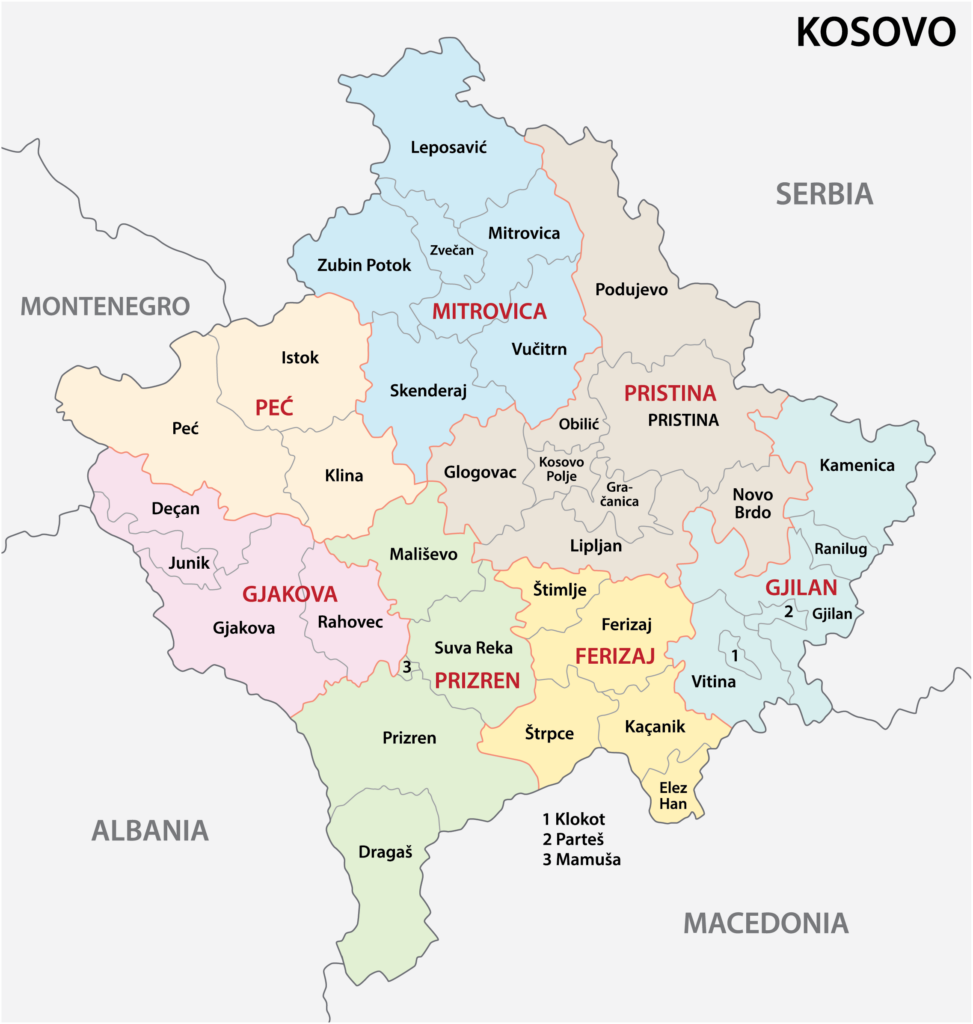
There are seven districts in Kosovo, which is the largest administrative division in the country. These districts were created as part of reforms carried out by the United Nations Interim Administration Mission in Kosovo (UNMIK) in 2000.
The largest and most populous of these districts is Pristina, which is also where the country’s capital of the same name is located. The least populous district is Peja, which contains Kosovo’s easternmost point and had a population of 174,235 in 2011.
Districts in Kosovo are further divided into municipalities, of which there are 38 in the country.
Geography of Kosovo
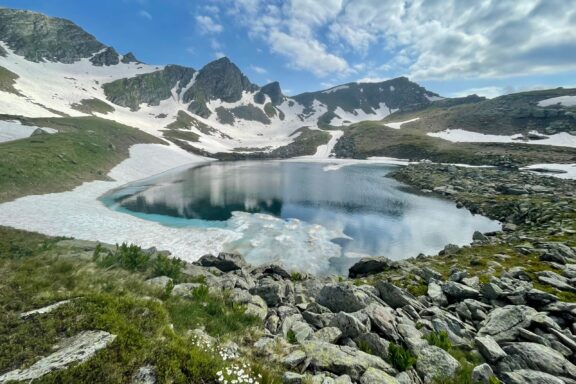
The smallest country in the Balkans, Kosovo covers 10,887 square kilometers (4,203 square miles) of land and has no maritime borders, instead bordering four other countries.
The geography of Kosovo consists primarily of high plains and hills in the center of the country surrounded by tall mountain ranges near the country’s borders. Roughly 75% of Kosovo lies at an elevation of between 500 — 1,500 meters (1,600 — 5,000 feet) above sea level.
Some of the most noteworthy aspects of the topography in Kosovo are its mountain ranges, particularly the Accursed Mountains and the Sharr Mountains. Mount Gjeravica, near Kosovo’s border with Albania, is the highest point in the country with an elevation of 2,656 meters (8,714 feet).
There are karst, thermal, and mineral water springs in Kosovo, but there are relatively few lakes. The artificial Gazivoda Lake is the largest lake in Kosovo.
History of Kosovo
Given its location at the heart of the Balkans, Kosovo’s history is closely linked to that of its neighboring countries. Its history as a self-proclaimed independent nation dates back only to 2008, but humans have been living on Kosovo’s land for thousands of years.
The earliest traces of humanity in Kosovo reach back to the Stone Age, possibly indicating the presence of some cave dwellings. Evidence of organized settlements in the Neolithic Age points to the presence of the Starčevo and Vinča cultures.
The Byzantine Empire was in control of the area by the Middle Ages and was frequently raided. The 6th century saw massive Slavic migrations, and Slavs and Serbs settled in the Balkan Peninsula from this point onward.
An ethnic Albanian settlement began during this period in what is now Albania, and the area of present-day Kosovo became the center of the Serbian Empire as Byzantine influence in the region weakened.
The next group to rule over the region was the Ottoman Empire, whose early presence was marked by the Battle of Kosovo in 1389. The leaders of the Turkish and Serbian armies both died in the battle, and what was left of the Byzantine Empire was left surrounded by Ottoman forces.
Kosovo was part of the Ottoman Empire from 1455 to 1912, which influenced the culture of the region and introduced Islam. The Ottomans lost control of Kosovo after the First Balkan War, and Serbia gained the territory for a brief period before losing it again in 1915. Kosovo then joined what would later become Yugoslavia as part of Serbia in 1918.
Kosovar Albanians made up the majority of the population by this time, and Serb colonists would make repeated attempts to settle the area over the next decades, though they remained a minority.
An unsuccessful bid for independence and opposition to Yugoslav and Serbian control led to the Kosovo conflict in 1998-99. The conflict saw ethnic Albanians and the Kosovo Liberation Army (KLA) fight against ethnic Serbs and the Yugoslav government.
Kosovo formally declared independence on February 17, 2008, a decision largely opposed by the Serb minority living in Kosovo.
Culture and People of Kosovo
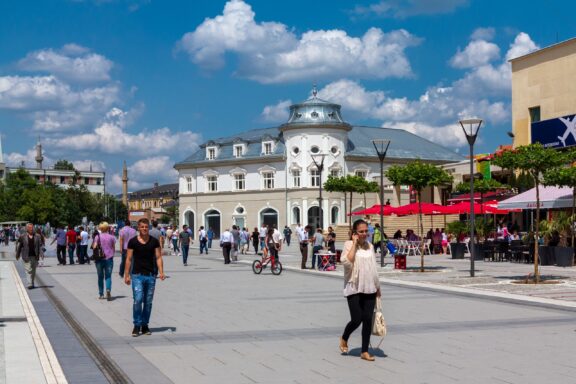
According to the Kosovo Agency of Statistics (KAS), the 2021 population of Kosovo was 1,773,971. This makes it the second-least populous country in the Balkans, ahead of only Montenegro.
Ethnicity
The ethnic history of Kosovo is complex and has led to ongoing conflicts in the territory. The largest ethnic group is currently Albanians, who may have been the majority in Kosovo since the 18th century. There is also a long history of Serbian presence and culture in Kosovo, though Serbs are now thought to make up less than 10% of the population.
The CIA World Factbook lists the following breakdown of ethnic groups in Kosovo as a 2011 estimate:
- Albanians: 92.9%
- Bosniaks: 1.6%
- Serbs: 1.5%
- Turk: 1.1%
The above figures are based on the 2011 Kosovo Census, which the CIA World Factbook acknowledges may under-represent the presence of Serbs and other ethnic minorities. The census excluded northern Kosovo, and many Serbs refused to participate.
Religion
As a secular state, Kosovo’s constitution guarantees freedom of belief, conscience, and religion to its citizens. It is rated as one of the most tolerant countries toward religion and atheism in Southern Europe by Humanists International.
The largest religious group in Kosovo is Muslim, accounting for roughly 95% of the population. The next largest groups are Roman Catholic and Eastern Orthodox. The Serb population, who are predominantly Serbian Orthodox Christians, is underrepresented in statistics.
Islam was introduced to Kosovo by the Ottomans, and the country currently has the second-highest percentage of Muslims in Europe after Turkey.
Language
The two official languages of Kosovo are Albanian and Serbian. In municipalities with linguistic communities representing at least 5% of the population, Turkish, Bosnian, and Roma are also official languages.
Mirroring the ethnic statistics in the country, the vast majority of people in Kosovo speak Albanian as a first language, and Serbian is the second-most spoken language.
Cuisine
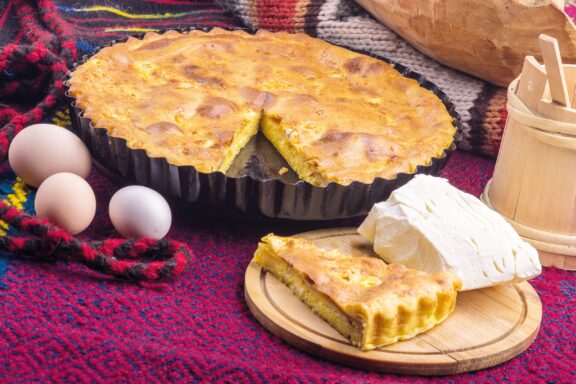
The cuisine of Kosovo is closely related to the ethnic groups living in the country. It represents common elements of Balkan cuisine, but Albanian dishes are the most closely related.
The typical foods eaten in the country vary with the seasons — fresh vegetables are consumed in larger quantities during the warmer months, and pickled foods are more common during colder months.
One of the national dishes of Kosovo is flija, a dish it shares with Albania. It is a layered pie brushed with cream and is served for special occasions.
Arts
The artistic heritage of Kosovo is easily observed in the country’s architecture, which has been influenced by different cultures and religions since as early as the Neolithic Age.
A great number of churches and monasteries constructed in the 13th and 14th centuries represent the country’s significant Serbian Orthodox history. Hammams and mosques constructed in the centuries that followed are relics of the Ottoman presence in Kosovo.
Featuring both local and international artists, the National Gallery of Kosovo is the highest visual arts institution in the country.
The shota is a popular traditional dance in Kosovo as well as Albania that features synchronized steps and is performed at weddings and festivals. Music in Kosovo includes influences from Albania, Serbia, and Turkey.
Biggest Cities in Kosovo
Here are the largest cities in Kosovo based on 2021 data:
| City | Population |
|---|
| Malisheve | 54,613 | Kline | 38,496 | Kamenice | 36,085 | Fushe Kosove | 33,997 | Shtime | 27,324 | Matican | 13,876 | Pozharan | 11,749 | Hani i Elezit | 9,403 | Dushanove | 9,398 | Donje Zabare | 7,394 |
Map of Kosovo with the Largest Cities
Kosovo Economy Facts
| World Bank Income Group | Upper Middle |
| World Bank Region | Europe |
| Currency | Euro (EUR) |
| GDP in 2020 | $16.9 (billions of USD) World Rank: 120 |
| GDP per capita in 2020 | $6,800 World Rank: 88 |
| Major Industries / Economic Sectors | Manufacturing, services, agriculture, energy |
| Top 5 Import Countries | Serbia, Montenegro, Albania, Slovenia, Germany |
| Top 5 Export Countries | Serbia, Montenegro, Albania, Slovenia, Germany |
Government and Politics in Kosovo
The government of Kosovo is a representative democratic republic with a parliament and multi-party system. Legislative, executive, and judicial institutions are responsible for governing the country.
The executive branch of Kosovo’s government is led by the prime minister, who is the head of government, and the president, who is the head of state. The country’s president is elected by the Assembly of Kosovo for a maximum of two five-year terms, and the prime minister is appointed by the president.
Voters directly elect deputies to the Assembly of Kosovo. There are 120 deputies, and at least ten of these are reserved for Serbs. Another ten are reserved for other ethnic minorities.
Tourist Attractions of Kosovo
Fascinating archaeological heritage, natural beauty, and a central location in Southern Europe are some of the reasons to visit Kosovo. The country is well suited to tourism because it is able to offer a variety of cultural and natural experiences. We’ll look at some of the best tourist activities in Kosovo in this section.
The Peć Patriarchate Monastery
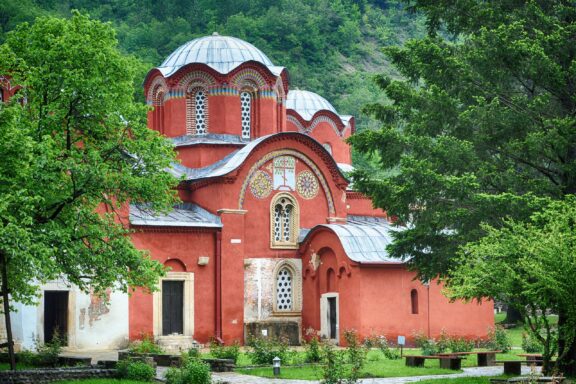
Located at the entrance to the Rugova Canyon, this monastery is a group of four domed churches built in the 13th century and is listed as a UNESCO World Heritage Site. It was inhabited by Serbian Orthodox archbishops
The Marble Cave
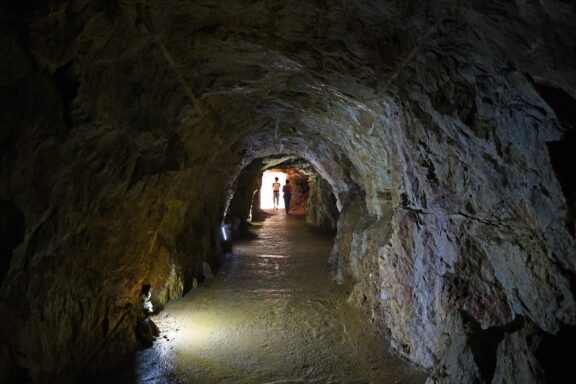
A visit to the marble cave in Kosovo makes for an otherworldly experience in nature. The cave was discovered in 1966 by a villager working in his garden, and it is now open to tourists.
Much of the cave is still unexplored, but 400 meters of it are open for visiting. The cave includes at least 25 lakes and various cave formations.
Pristina
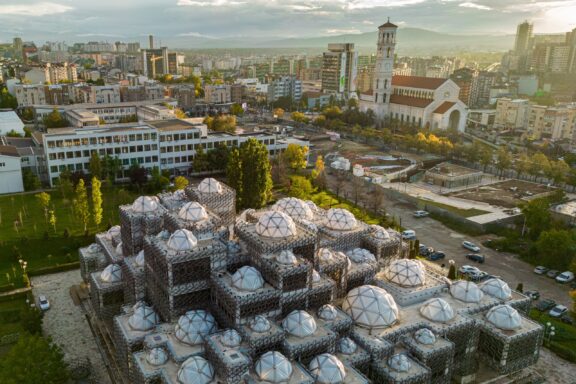
The capital of Kosovo is highly recommended as a place for tourists to visit. The city is a tapestry of the old and the new existing side by side, and tourists will get a feel for the country’s diverse ethnic history and how Kosovans are facing the future.
Popular activities in the city involve visiting one of its several museums and simply drinking coffee at one of the many cafes with locals and watching the world go by.
Transportation and Infrastructure of Kosovo
Entering Kosovo is possible by land from any of its bordering countries: Serbia, Montenegro, Albania, and North Macedonia. Since Serbia does recognize its border with Kosovo as international, one can cross into Kosovo at unofficial crossings without the need for a visa.
Another popular method for arriving in Kosovo is via Pristina International Airport, the country’s only international airport. Once in the country, limited railway services link several cities, though buses, taxis, and car rentals are more popular modes of transportation and are generally considered to be more efficient.
Climate and Weather of Kosovo
As a landlocked country, Kosovo has a predominantly continental climate with significant annual weather changes, though it is also influenced by Mediterranean and Alpine climates.
Kosovo’s southernmost areas, close to the Albanian border, have the warmest temperatures in the country. The mountainous regions in Kosovo’s western and southeastern territories are the coldest and experience significant snowfall.
Kosovo’s warmest month is July, with a country-wide average temperature of 19.2 °C (66.6 °F). The coldest month is January, when the average temperature is −1.3 °C (29.7 °F).
Kosovo Related Content
- International Recognition of Kosovo
- Municipalities of Kosovo
- What is the Capital of Kosovo?
- Kosovo Flag Map and Meaning
Kosovo Key Facts
| Country | Kosovo |
| Coordinates | Latitude: 42.602636 Longitude: 20.902977 |
| Country Codes | Alpha 2: XK Alpha 3: XKS |
| Country Flag Emoji | 🇽🇰 |
| Int. Phone Prefix | +383 |
| Capital city | Prishtina |
| Continent Subcontinent | Europe Southern Europe |
| Country Area | 10887 sq km |
| Population 2021 | 1,822,000 World Rank: 148 |
| Median Age | 30.50 |
| Life expectancy | 79.27 women, 73.99 men |
| Major languages | Albanian (official) 94.5%, Bosnian 1.7%, Serbian (official) 1.6%, Turkish 1.1%, other 0.9% (includes Romani), unspecified 0.1% (2011 est.) |
| UTC/GMT Time | Number of time zones: 1
|
| Internet TLD | .xk (temporary, unofficial) |
| Biggest Airport | Pristina International Airport (Pristina) |
| Average temperature | 15.00 °C 59.00 °F |
| Administrative Divisions | Districts |
| Political system | Parliamentary democracy |